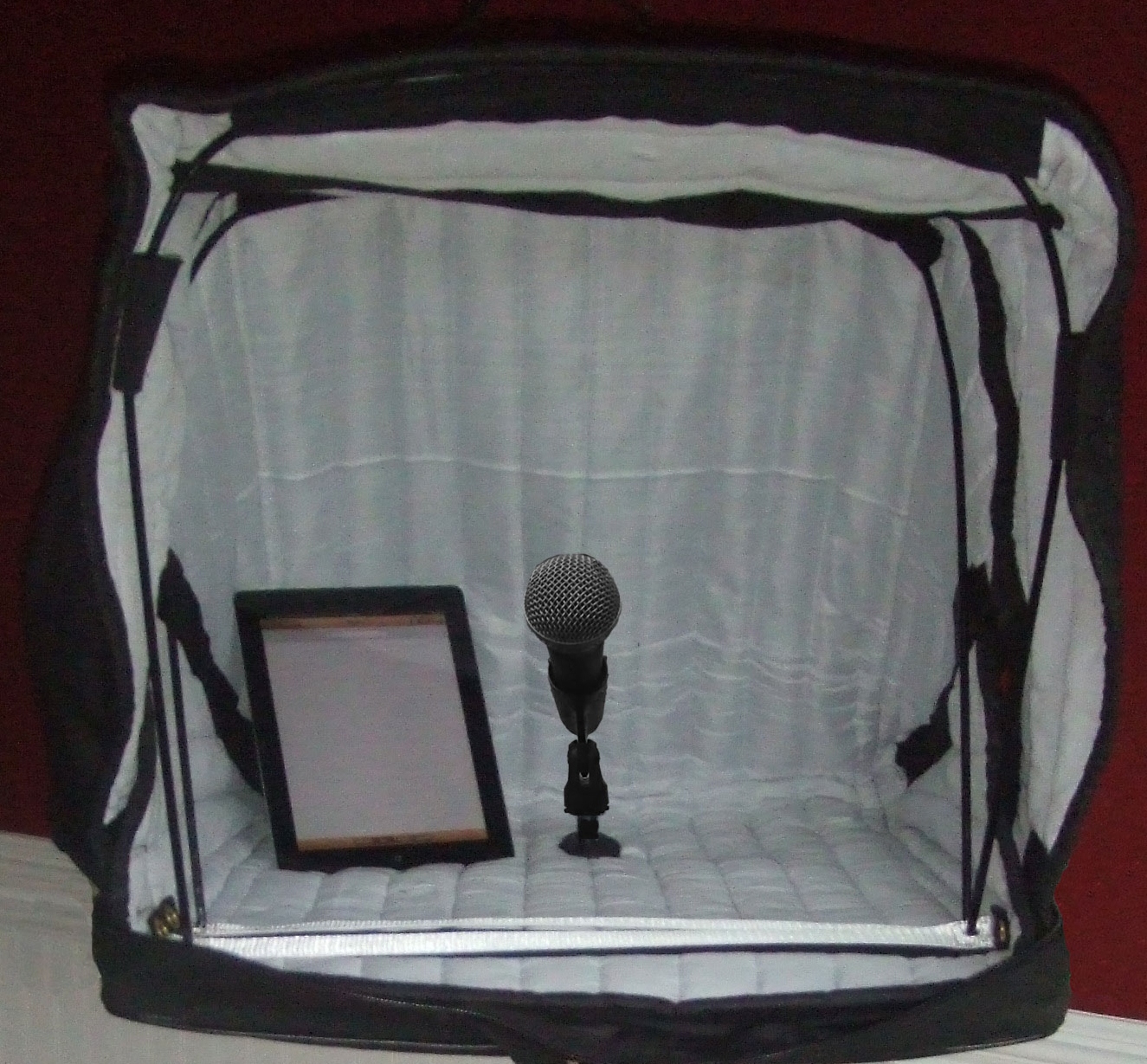How To Use The Carry-On Vocal Booth . . . Your Studio On The Go!
With the Carry-On Vocal Booth, voice over talents can take control of their time and conduct their sound recordings anywhere and everywhere — even when on travel. This portable vocal booth is also a great starter for beginners, who may not want a full-size vocal booth just yet.
Here is how to use your Carry-On Vocal Booth:
SPECIFICATIONS:
Size: Ass embled: 24W x 22D base and 20 H. Folded in bag: 24 x 22 x 4 inches. Weight: 8 lbs.
embled: 24W x 22D base and 20 H. Folded in bag: 24 x 22 x 4 inches. Weight: 8 lbs.
Construction of Bag: Outer bag made out of durable abrasion resistant ballistic nylon and includes handles, shoulder strap and a large-side pocket with Velcro tab. A Bag closed with heavy duty zipper. (Note: Hole under the pocket flap is intentional and for the purpose of adding the microphone stand, wires or cords).
Construction of the Interior: Highly absorbent woven acoustic sound blanket — Producer’ss Choice Acoustic Blanket (NRC 0.8 or 80% sound absorption); metal support system and Velcro closures.
